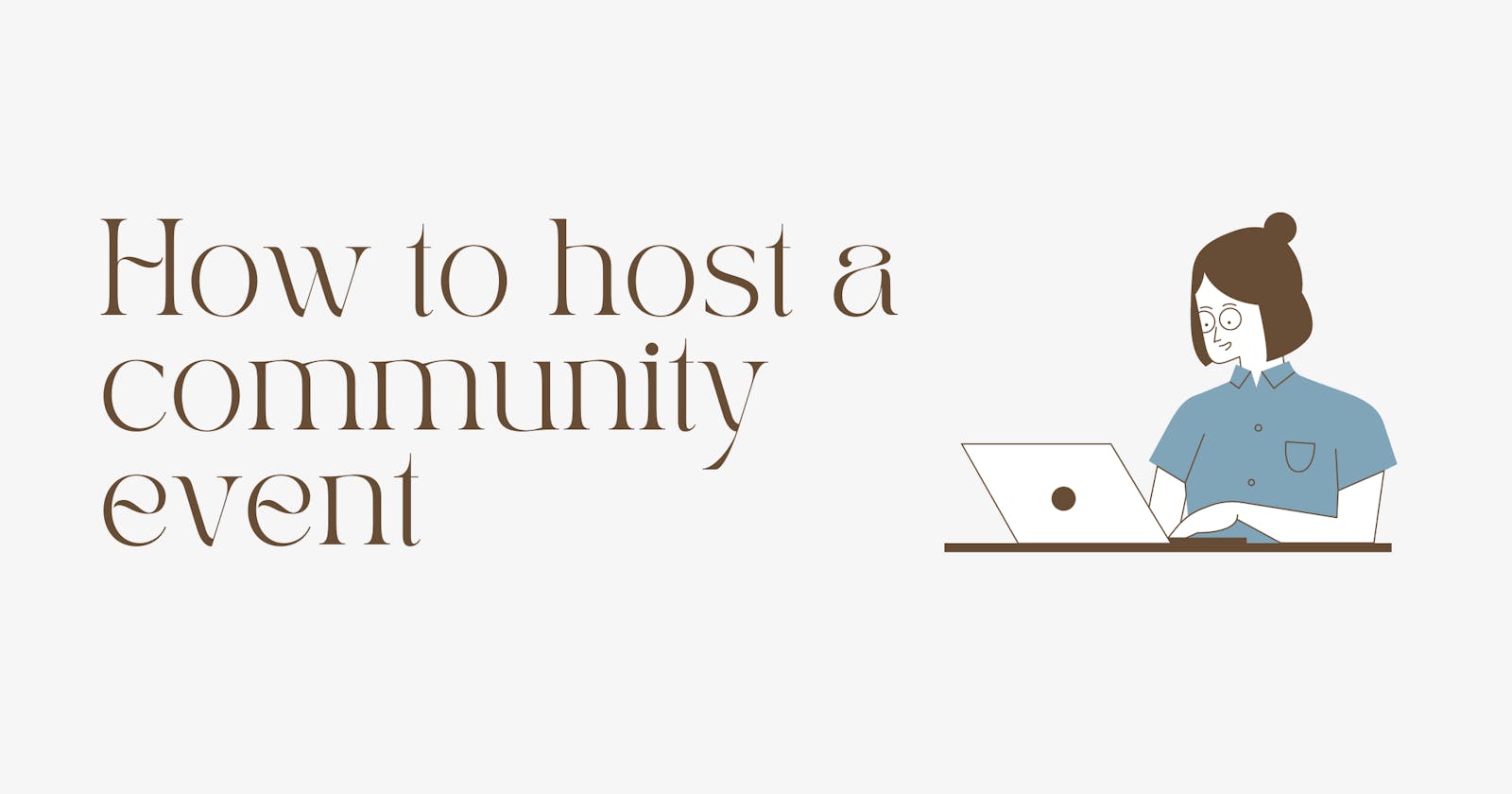How to host a community event

As a DevRel professional we are responsible for the 3Cs - code, content and community. In this article we will talk about a part of community management which is hosting events. While it might look simple, there are many hiccups that you might face while hosting your first or 10th.
What are community events?
Community events also known as “meetups” are a great way for product companies to meet their users, talk about the product and get direct feedback. For community members, it is a great place to learn and network with other like minded folks. Almost every product based companies have such events, some might do a series of events across the world and give it a fancy name like “Xyz city tour” or “Xyz roadshows”. These events can help companies determine product-market fit, interest among developers (for devtool companies) and other business-related metrics.
How to plan and execute an event?
A great event requires great planning. Let me show you how you can do it in 5 steps:
Step 1: Open a fresh doc. Come up with an exciting name for the event. For e.g, I hosted an event on Headless Hashnode, the name I kept for it was “Headless and Happy Hours”.
Step 2: Write a rough agenda. Answer these following questions:
- Who is my target audience?
- What is my end goal?
- How can I make the event worth the attendees' time?
- How can I make sure that the attendees get to learn and network? What should be the timings? How long should the sessions be?
- Who all should I invite to speak for the event?
Step 3: Figuring out venue, food & beverages, swags and other logistics. This is where you need to involve other team-members and delegate tasks with strict deadlines.
- Design team: Designing of swags and creatives for social media promotion.
- Ops team: Arranging venue, FnB and ordering+delivering of swags.
Note: Typically, for the venue, you need to put your DevRel hat on and look for venues (maybe using office spaces of companies you have collaborated with before).
Step 4: What are some metrics that you would like to show to your company? Depending on your company KPIs, here are some of the things you can do:
- Add resources with trackable links (count the number of clicks, this helps in knowing how many people are interested)
- You can host quizzes or giveaways during the event and track metrics like:
A. Brand score on social media
B. Interest in your product
- Setup a sandbox environment/lab for developers to try your product (applies to only those products that do not have a free trial). If you are doing a workshop this can really help in:
A. Showing number of developers who built with your product
B. Getting direct feedback from developers and knowing how you can improve your product
- Have meaningful collaborations with other companies. For e.g. I did a collaboration with Digital Ocean for Headless Hashnode where we built an integration and wrote a blog on it.
Step 5: Plan promotions. Starting promotions at least 2 weeks before the actual event can help. Make sure you have a content calendar ready.
Bonus - Document all of these processes and use it as a template for future events. Try to take inspiration from the famoushub and spoke modeland create your own way of organizing events and expanding it to more cities and countries.
Problems encountered
The problems encountered can be very unique depending on your location. Here are some of the problems I faced and the learnings from it:
Hosting an event in a country where English is not widely used.
Learning: If you are hosting an event in a country that you have never visited before, the best way is to take help from the local people. Do a thorough research of the culture there and what works out and what doesn’t.
Not enough people turning up.
Learning: This can be due to multiple reasons. Some hacks that worked for me are:
- Accepting more people than the capacity: This is something that worked out for me in India and it may/may not work out for you. I have seen a drop rate of at least 50% for free events, so I generally accept higher numbers.
- Inviting industry experts: Since they are so good at what they do, people will turn up to listen to them.
- Giving an exclusive feel to the event: Use your and design team’s creativity for this.Audio visuals not up to the mark or poor internet
Learning: For tech meetups, it becomes necessary to have a stable connection and good audio visuals. It is advised to request for these in the introductory email itself. If you can visit the venue, do check all of it, and if you are not present in the location, request the venue manager to send you video and details of the setup.
Ordered more food than the number of attendees.
Learning: This again is a problem unique to India (might also be the same for other countries). In my experience, ordering slightly more food (equal to the number of people the venue can accommodate) is better. Have excess food? You can always look for the nearest NGO and donate. I did that in my last meetup and the shelter owners were overjoyed.
Note: After hosting an event, have a retrospective document with your team members. Understand what went well and what didn’t and work on actionable items for the next one.
Conclusion
Hosting a community event requires good understanding of the community, and also good management skills. Community events are a great way for you to grow the community, meet community members and increase brand awareness.
Special shout-out:
You can also read this article on Lead DevRel's newsletter. Thanks to the team for the idea and also for giving me a column to write.